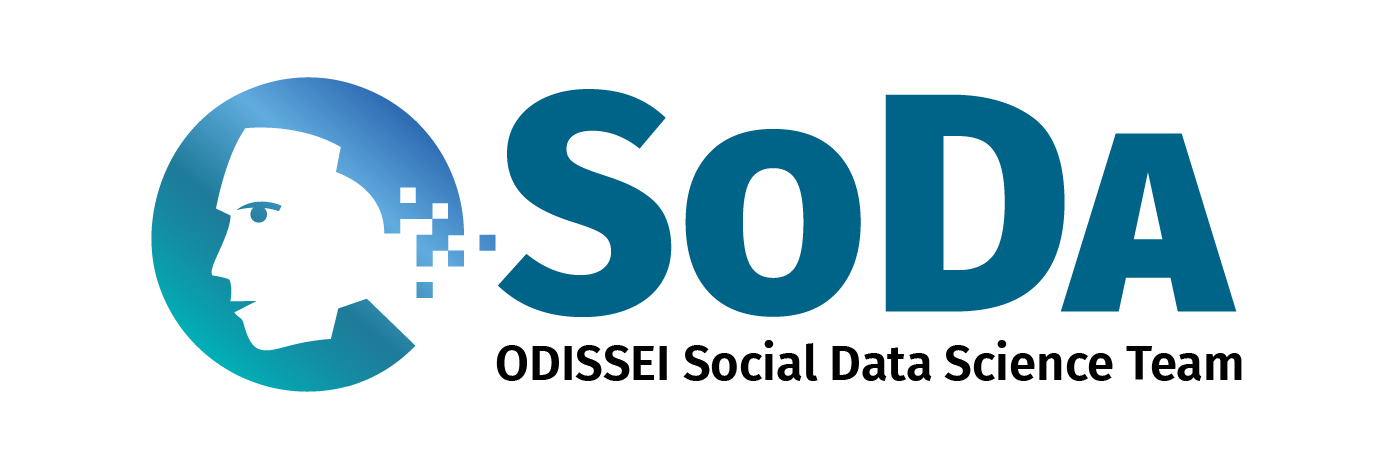Enrich geocoded data using openstreetmaps (Coming soon!!!)
The goal of osmenrich is to easily enrich geocoded data
(latitude/longitude) with geographic features from OpenStreetMap (OSM).
The main language of the package is R and this package is designed to work
with the sf and osmdata packages for collecting and manipulating geodata.
Installation
To install the package, run:
remotes::install_github("sodascience/osmenrich")or, for the development version, run:
remotes::install_github("sodascience/osmenrich@develop")This will use the default public APIs for OSM data and routing (for computing
driving/walking distances and durations). Do not use osmenrich with
default APIs for large datasets! If you want to learn how to use osmenrich
for large queries follow the instructions in section
Local API Setup below.
Usage
Simple enrichment example
Let's enrich a spatial (sf) dataset (sf_example) with the number of waste
baskets in a radius of 100 meters from each of the point specified in a
dataset:
# Import libraries
library(tidyverse)
library(sf)
library(osmdata)
library(osmenrich)
# Create an example dataset to enrich
sf_example <-
tribble(
~person, ~id, ~lat, ~lon, ~val,
"Alice", 1, 52.12, 5.09, 5L,
"Bob", 2, 52.13, 5.08, 2L
) %>%
sf::st_as_sf(coords = c("lon", "lat"), crs = 4326)
# Print it
sf_example
#> Simple feature collection with 2 features and 3 fields
#> geometry type: POINT
#> dimension: XY
#> bbox: xmin: 5.08 ymin: 52.12 xmax: 5.09 ymax: 52.13
#> CRS: EPSG:4326
#> # A tibble: 2 x 4
#> person id val geometry
#> * <chr> <dbl> <int> <POINT [°]>
#> 1 Alice 1 5 (5.09 52.12)
#> 2 Bob 2 2 (5.08 52.13)To enrich the sf_example dataset with "waste baskets" in a 100m radius, we
create a query using the enrich_osm() function. This function uses the
bounding box created by the points present in the example dataset and searches
for the specified key = "amenity" and value = "waste_basket. We also add a
custom name for the newly created column and specify the radius (r) used
in the search.
# Simple OSMEnrich query
sf_example_simple <- sf_example %>%
enrich_osm(
name = "waste_baskets",
key = "amenity",
value = "waste_basket",
r = 100
)
#> Downloading data for waste_baskets... Done.
#> Downloaded 26 points, 0 lines, 0 polygons, 0 mlines, 0 mpolygons.
#> Computing distance matrix for wastebaskets...Done.
#> Adding waste_baskets to data.
The resulting enriched dataset is a sf object and can be printed as usual
and we can inspect the newly added column waste_baskets.
sf_example_enriched
#> Simple feature collection with 2 features and 4 fields
#> geometry type: POINT
#> dimension: XY
#> bbox: xmin: 5.08 ymin: 52.12 xmax: 5.09 ymax: 52.13
#> CRS: EPSG:4326
#> A tibble: 2 x 5
#> person id val geometry waste_baskets
#> * <chr> <dbl> <int> <POINT [°]> <int>
#> 1 Alice 1 5 (5.09 52.12) 3
#> 2 Bob 2 2 (5.08 52.13) 0Local API setup
OSM enrichment can ask for a lot of data, which can overload public APIs. If you intend to enrich large amounts of data or compute routing distances (e.g., driving duration) between many points, you should set up a local API endpoint.
We provide a docker-compose workflow for this in the separate
osmenrich_docker
repository. Use the README
on the repository for setup instructions.
Contributing
Contributions are what make the open source community an amazing place to learn, inspire, and create. Any contributions you make are greatly appreciated.
In this project we use the
Gitflow workflow
to help us with continious development. Instead of having a single
master/main branch we use two branches to record the history of the
project: develop and master. The master branch is used only for the
official releases of the project, while the develop branch is used to
integrate the new features developed. Finally, feature branches are used to
develop new features or additions to the project that will be rebased and squash in the develop branch.
The workflow to contribute with Gitflow becomes:
- Fork the Project
- Create your Feature Branch (
git checkout -b feature/<AmazingFeature>) - Commit your Changes (
git commit -m 'Add some <AmazingFeature>') - Push to the Branch (
git push origin feature/<AmazingFeature>) - Open a Pull Request
License and citation
The osmenrich package is published under the MIT license. When using
osmenrich for academic work, please cite:
Will soon follow.
Contact
This package is developed and maintained by the ODISSEI Social Data Science (SoDa) team.
Do you have questions, suggestions, or remarks? File an issue in our issue tracker or feel free to contact Erik-Jan van Kesteren (@ejvankesteren) or Leonardo Vida (@leonardojvida)


